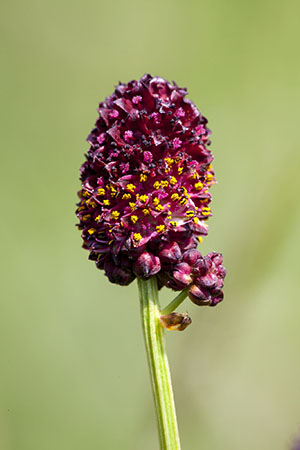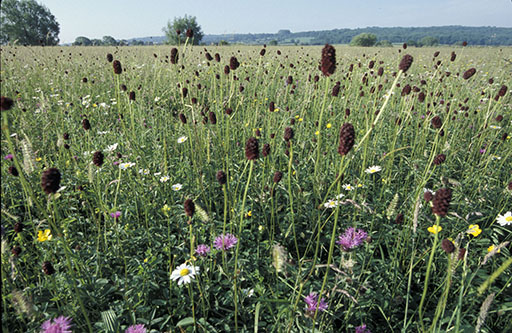3 Plant communities
Plant species with similar environmental requirements tend to grow together consistently, forming recognisable plant communities.
Two distinctive grassland plant communities have developed on floodplains as a result of the cycle of flooding, drying, sediment deposition and hay cutting. Each of these communities may contain as many as 40 different plant species in just one square metre; making them amongst the most species-rich vegetation types in the UK. One is characterised by a tall herb of the rose family: great burnet, see Figure 2); the other by a member of the buttercup family: marsh marigold (see Figure 3).
With so many species growing in close proximity to one another, competition for resources (light, water, nutrients) is intense. Small changes in the environment can alter the competitive balance, allowing one species to replace another. Which species of plant you find in a meadow can therefore tell you a lot about the site’s history, management, soil and hydrology. Once you understand what you’re looking for, you can almost read them like a book. Most sites support more than one plant community because the environment is variable (e.g. some patches are wetter than others) and dynamic (e.g. some years are wetter than others.)
The following graphic illustrates how dynamic a floodplain meadow is, changing from year to year as a result of the varying weather patterns. Click on it to see how the abundance of great burnet changes over time in response to changes in the duration of wet soil conditions.
The variability of great burnet in both time and space is representative of the other eighty plus grassland species found at this site. The ever-changing environment constantly shifts competitive balances allowing so many plant species to coexist.
Activity 2
Does the abundance of great burnet appear to expand or shrink in a wet year?
Answer
Its abundance varies annually, showing the dynamism of conditions in the floodplain. It tends to be more abundant after drier years.



